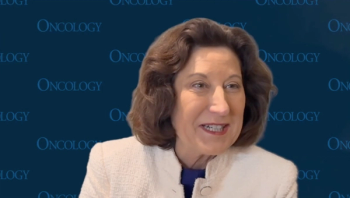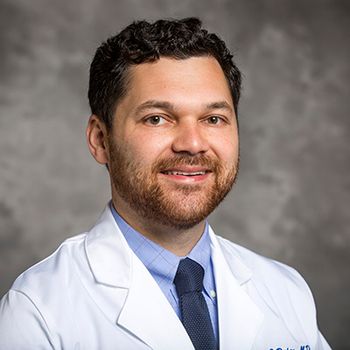
- ONCOLOGY Vol 16 No 5
- Volume 16
- Issue 5
Mammography Debate Continues
The journal Lancet recently published an important analysis from six physicians at Weill Cornell Medical College (359:404-406, 2002), rebutting an article published in an earlier issue of Lancet (358:1340-1342, 2001) that cast doubt on the value of mammography in preventing death from breast cancer.
The journal Lancet recently published an importantanalysis from six physicians at Weill Cornell Medical College (359:404-406,2002), rebutting an article published in an earlier issue of Lancet(358:1340-1342, 2001) that cast doubt on the value of mammography in preventingdeath from breast cancer. The Weill Cornell authors believe the debate overbreast cancer screening has been misguided and has done a disservice to thegeneral public, to physicians, and to women specifically. Their hope was thattheir latest analysis would reopen and refocus the issue. Indeed, the ensuingdebate has had experts repeatedly change their stand on the value of mammographyscreening.
Flawed Design
The Weill Cornell team, led by Drs. Claudia Henschke and David Yankelevitz ofthe department of radiology and Dr. Olli S. Miettinen of the department ofmedicine, pointed out the fundamental flaws in the design of the study thatevaluated the usefulness of mammography screening. One flaw was the mistakenassumption that screening is supposed to prevent death from cancer almostimmediately after it is performed. In reality, the authors noted, only earlytreatment can result in immediate cure, whereas the screening-prevented deathwould have occurred several years later.
Another even more fundamental flaw was the failure to include any meaningfulmeasure of the screening’s usefulness. The purpose of screening for cancer isto enhance its curability and, thereby, to reduce the risk of death from thecancer insofar as it develops. This risk is expressed by the cancer’scase-fatality rate.
Thus, an important measure of any cancer screening’s usefulness is itsresultant proportional reduction in the cancer’s case-fatality rate. Themagnitude of this reduction can be estimated from trials (screening vs noscreening, rather than early vs late treatment) only if they involvesufficiently long-term screening, and an appreciation of the time lag betweencure and the thereby prevented deaths.
Growing Controversy
Drs. Ole Olsen and Peter C. Gøtzsche were the original authors of the Lancetmeta-analysis that reviewed seven trials of mammographic screening and concludedthat "there is no reliable evidence that screening for breast cancerreduces mortality." This conclusion was widely noted and publicized. OnDecember 9, 2001, The New York Times said that "experts and women’shealth advocates . . . do not know what to think about the report." Morerecently, another article in the Times reported that, "An independent panelof experts said today that there was insufficient evidence to show thatmammograms prevented breast cancer deaths."
In their rebuttal, the Weill Cornell physicians point out that the Olsen-Gøtzschestudy mixes "irrelevant experience" (data from the first few yearsafter the start of screening, and total mortality data from all causes) with"relevant experience" (data from after 6 years of screening andpertaining only to deaths resulting from breast cancer), thus confounding theconclusion.
The Weill Cornell authors argue that, with mammographic screening,"the idea is to achieve early diagnosis and, thereby, early treatment,presumed to be more commonly curative than the relatively late treatment in theabsence of screening. The idea thus is to reduce the case-fatality rate."When there is screening, early diagnosis, and treatment, and if death is averted(in the short term), the averted death would have occurred some years"after the early diagnosis and its associated early treatment." Thismeans that the mortality data from a randomized control trial comparingscreening with no screening must be obtained many years after the onset ofscreening, and that any screening must continue for a sufficiently long time torealize its benefit.
Instead, Drs. Olsen and Gøtzsche cited the total mortality data from twotrials they considered most validthe Malmö and Canadian trials. In theCanadian trial, screening was only performed for 3 to 4 years after entry intothe study. In the Malmö trial, over the entire 11 years studied, 63 patients inthe screened cohort died of breast cancer, as did 66 in the unscreened cohort.On that basis, and with other such global numbers from other studies, Drs. Olsenand Gøtzsche reached their conclusion of "no reliable evidence."
The Reanalysis
The Weill Cornell authors focused only on breast cancer deaths (not overallmortality) and broke down the data by the years in which the deaths occurred.They point out that in the Malmö study among women aged 55 years or older atstudy entry, there were 16 breast cancer deaths in the screened cohort in thefirst 5 years vs 13 in the control cohort; in the sixth year, practically equalnumbers of breast cancer deaths occurred; but, from the eighth year onward,fewer breast cancer deaths occurred in the screened cohort: 14 vs 31.
Similarly, in the cohorts of women aged 45 to 54 at study entry, there were10 breast cancer deaths in the screened cohort in the first 5 years vs 4 in thecontrol cohort, but, from the eighth year onward, there were fewer deaths in thescreened cohort: 11 vs 15.
Thus, the benefits of regular screening appeared after 6 years, and the data,at least for women age 55 and older, amount to "reliable evidence"that "mammographic screening provides for reduced mortality from breastcancer, after a suitable delay."
To stoke the controversy, the Physician Data Query (PDQ) screening andeditorial board of the National Cancer Institute (NCI) reported that they hadreviewed the same seven studies as Drs. Olsen and Gøtzsche and had also come todoubt the merits of mammography.
But Dr. Henschke and her colleagues remain convinced of the significance oftheir analysis, and believe that their type of analysis applies not only tobreast cancer screening but to all cancer screening.
Of the earlier study in Lancet, they write, "This failure is notpeculiar to these two authors; it is, alas, ingrained in today’s orthodoxysurrounding trials on screening for cancer. . . . For the mammography trials andreviews, the object should have been designed to pertain to case-fatality rateand to be, specifically, the reduction in it resulting from the earlyinterventions that are provided by screening-based early diagnoses. Pursuit ofreliable, valid, and statistically significant/precise evidence in terms of awrong measure of screening’s usefulness is not only useless, it misleadspublic policy and confuses not only the public but physicians also."
Shifting Positions
After publication of the Weill Cornell critique, the NCI issued a statement,noting that it had carefully considered issues raised in the Lancet review, andthat after consulting with a variety of experts in the field, it would continueto recommend that:
- Women age 40 and older should be screened every 1 to 2 years withmammography.
- Women who are at higher than average risk of breast cancer shouldseek expert medical advice about whether they should begin screening before age40 and the frequency of screening.
"It is absolutely essential to look beyond the debate over thelimitations of current data and to accelerate the development of betterscreening tools," said NCI director Andrew von Eschenbach, md. "Whilewe will continue to be vigilant in reviewing data on mammography, we mustemphasize research to develop more effective screening tools and strategies thathold promise for improved detection of breast cancer and, ultimately, for savinglives."
At the same time, Secretary of Health and Human Services Tommy G. Thompsonannounced the issuing of new federal guidelines that strongly recommendmammography be performed to screen for breast cancer, and that testing begin atage 40.
Other Voices Heard From
In another Lancet-published update (359:909-919, 2002), based in part on thecontinuation of the Malmö trial, Swedish investigators concluded that thebenefits of mammographic screening on breast cancer mortality persist even afterlong-term follow-up. They wrote, "The recent criticism against the Swedishrandomized controlled trials is misleading and scientifically unfounded."
Most recently, the World Health Organization’s International Agency forResearch on Cancer released a report concluding that mammography use may preventbreast cancer mortality in 1 of every 500 women between the ages of 50 and 59.
Articles in this issue
over 23 years ago
Promising New Treatment Option for Primary Bone Cancerover 23 years ago
Irinotecan, Cisplatin, and Radiation in Esophageal Cancerover 23 years ago
Irinotecan for the Treatment of Cervical Cancerover 23 years ago
Irinotecan in Epithelial Ovarian Cancerover 23 years ago
Combined-Modality Therapy for Rectal Cancer Using Irinotecanover 23 years ago
Future Directions in Adjuvant Therapy for Rectal CancerNewsletter
Stay up to date on recent advances in the multidisciplinary approach to cancer.















































































